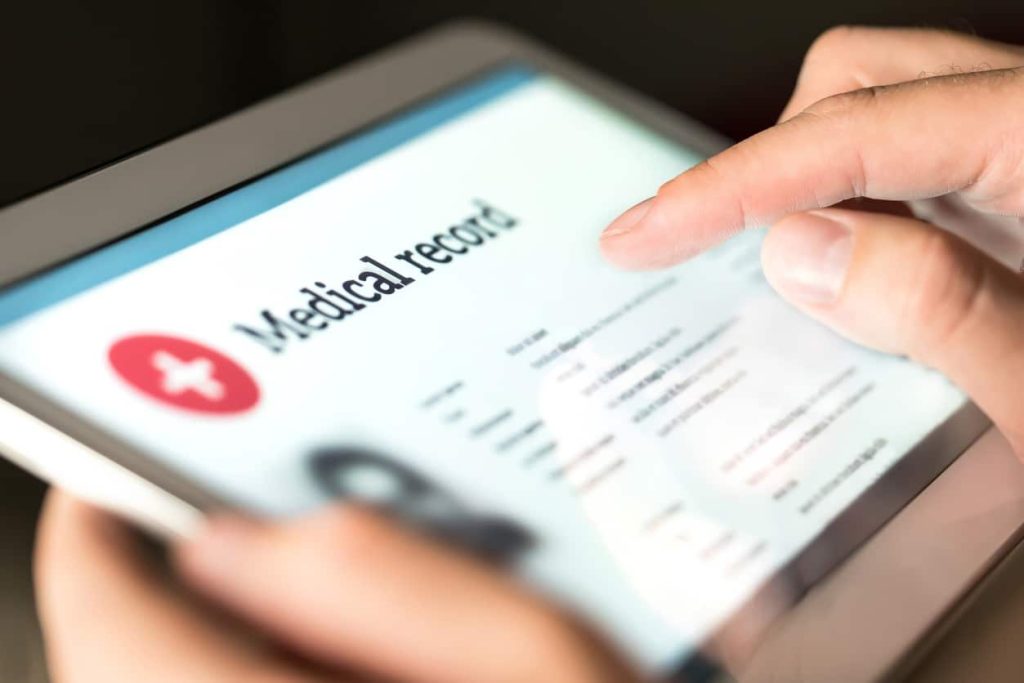
One of, if not the largest, sectors in existence today is the healthcare sector. To raise the level of living for all people, there has to be a large and expanding business that is exclusively committed to helping patients and other people suffering physically or emotionally.
Initiatives to engage patients are commonplace in healthcare institutions. Healthcare institutions recognize the value of involving patients in their care through patient advisory groups, patient-centered portals, social media platforms, and secure texting. A crucial component of the sustainability of healthcare services is patient Engagement.
Patient engagement statistics show that the market for patient engagement solutions in the United States was estimated to be worth $4.41 billion in 2020 and is projected to grow to $5.0 billion in 2024. This demonstrates unequivocally increased desire among healthcare professionals to raise patient engagement rates.
There are various causes for this failure, some of which have been noted and discussed in the section below, along with potential solutions.
Table of Contents
What is patient Engagement?
The ability and desire to actively participate in care in a way that is particularly relevant to the individual (patient), in collaboration with a healthcare practitioner or institution, to maximize results or improve care experiences is known as patient Engagement.
Why patient engagement strategy isn’t effective
For patients who are unsatisfied, engagement tools are too little, too late.
Customers must go through slow and complicated enrollment processes when joining a healthcare or medicare provider today because of isolated systems and gravely out-of-date legacy processes. To obtain lengthy and complicated PDF forms, medical records, payer information, and numerous papers and consents, patient consumers are bounced across many channels, from the contact center to their email, only to register as patients. In addition, long wait times and a challenging patient experience are more common than not due to providers’ efforts to slow down ongoing patient care, intake, billing, and other servicing activities due to the burden of managing many systems and paperwork.
Because of this, doctors are already challenged when an existing patient receives information on improving their health or is sent a link requesting them to complete a satisfaction survey.
Patients are much less likely to be receptive to patient engagement efforts later if they have already encountered bureaucratic and inconvenient experiences each time they turn to their healthcare provider.
Limited contact information
There is still a reliance on the partial and erroneous contact information provided by mail and telephone. Information through email or mobile phones is rarely accessible, so new tactics are required to open up these crucial communication channels. When there are few ways to get in touch, “Unable to Reach” is frequently the dominant metric.
Language and communication barriers

Source: pexels.com
A clinician cannot evaluate patient activation or make progress in encouraging it without effective communication. However, because there are gray areas in human connection, it cannot be easy to have a fruitful office visit.
The most obvious obstacle to a meaningful patient-provider conversation is language limitations. It can be challenging to get to the heart of a self-management procedure when a doctor speaks English as their first language, and the patient only has a limited command of the language.
Lack of proper check-ins
Patient check-ins are the very next action that follows patient appointments. The check-in procedure for patients is required at healthcare facilities since it is during this phase that patients register with the facility, which also gains knowledge of their medical background, current prescriptions, and other details. Unfortunately, this procedure has a bad reputation for being needlessly drawn out and complicated.
Long wait times

Source: pexels.com
One of the biggest burdens on patients’ lives is waiting. Although it is ideal for patients to wait less than 10 minutes, even with the current state of software and procedures, this is still not always feasible. The length of the patient wait is acknowledged as having a significant impact on the patient experience. According to the patient engagement statistic, 97% of patients find waiting in line the most annoying aspect of their experience. Even while you cannot eliminate patient wait times, you can use the newest software, tools, and online resources, which will enable you to reduce the wait time significantly!
Lack of transparency
It is frequently discovered that patient service providers or healthcare facilities lack openness, particularly regarding wait times and healthcare costs. More than 43% of patients have expressed regret over not being informed of their wait time, and more than 65% of patients have expressed a need for transparency regarding the price of healthcare services. Being open during these two processes can significantly increase patient engagement rates and effectively retain patients!
Low patient health literacy
Low patient health literacy can obstruct efforts to increase patient activation, much like language and communication hurdles. A patient’s ability to use, access, and process specific health information is referred to as health literacy.
A patient with a high level of health literacy can comprehend the complicated medical ideas that their provider may explain and can provide their own interpretation of their diagnosis. Patient activation and health literacy are closely related. A patient who is highly active is likely to have a high level of health literacy because she is motivated to manage her health, understands how to do so, and can access the tools she needs.
In contrast, a patient with inadequate health literacy may understand the value of taking charge of her health but cannot implement the necessary actions.
Inexperienced doctors and staff

Source: pexels.com
Because they are the ones that provide patients with the highest level of care, doctors and nurses are the medical professionals who have a direct impact on the patient experience. The medical personnel, the receptionist, and other individuals who have direct contact with patients are next. As a result, they must all be skilled, self-assured experts who treat patients confidently and guide them toward healing.
Dearth of hospitality
Only a select few hospitals and healthcare facilities can truly excel at hospitality. It’s crucial to realize that patients only knock on clinic and hospital doors if they need medical attention. It is, therefore, accurate to say that they are already frustrated by their conditions.
Now, if the clinics and their staff don’t model appropriate behavior, that’s just adding salt to injury and could hurt the reputation of the specific medical care provider. In addition, an overworked worker might provide less of the necessary hospitality.
Ways to make patient Engagement effective
Remember that patients or clients are people.
It’s critical to remember that our patients and clients are guests in the medical and cultural spaces we establish and uphold as physicians. For everyday individuals, our cultural environment is frequently abnormal. Success for our patients and clients may depend on how we change our culture to make room for them. The person-centered practice has advantages for patients and clients and the therapist. By experimenting with new procedures and business models, you might be able to avoid burnout while discovering intriguing methods to help your neighborhood.
Automate Patient Engagement

Source: welkinhealth.com
Even one patient requires a lot of time to participate actively and meaningfully. Therefore, use technology to automate patient involvement rather than handling each interaction by hand. Automated patient interaction techniques work just as well and can boost the efficacy of patient follow-up.
Automation benefits your workforce in addition to helping you stay connected and boost patient happiness. With automated patient interaction in healthcare, your workforce is relieved of the responsibility, preventing staff shortages and burnout.
Provide patients with straightforward yet specific instructions.
Avoid using as much medical jargon as you can while speaking with patients. Patients don’t like lengthy, intricate descriptions. Instead, when explaining their diagnosis and treatment plan to patients, be direct and concise. Because it is impossible to predict a patient’s level of health literacy, keep things straightforward. On the other hand, a destination without the required map directions is offered by ambiguous and inadequate guidance, such as “you need to reduce weight.”
Learn How to Communicate with Patients
Every patient wants to be treated uniquely by the medical team. They have certain worries, phobias, and aspirations for the future. Providers and other staff members that interact with patients should receive training on effective patient-level communication techniques. Effective communication involves speaking less and listening more.
Find out the patient’s preferred contact method and make every effort to comply. You’re losing out on important communication chances if you send form emails to every patient you have, including those who prefer text and rarely check their emails.
Consider Every Angle
Top-Down: Patient participation must be prioritized at the top and continually reaffirmed by management and senior leadership. Employees who work directly with patients can lack the tools and resources needed to put patient Engagement first without a strong cultural push.
Bottom-Up: Focus on educating your patient-facing staff (doctors, nurses, and receptionists) on how to hear and record patients’ issues at every level as your patient engagement culture improves.
Offer patients access to a personal medical record that is mobile-ready.

Source: virtru.com
The website and personal health record (PHR) gateway for your clinic or institution should be responsive to mobile devices and compatible with the most recent smartphones. Patients rely on this capability to use their phones to search the web and find your company and important health-related information. Patients gain from the mobile PHR (mPHR) because it advances telehealth, reduces medical mistakes, enhances health behaviors, and gives healthcare professionals a way to quickly exchange information with patients.
Send text-based appointment reminders.
Appointment reminders sent through text assist decrease “No-Shows” and ensuring that people come on time and remember their appointments. Patients frequently prefer SMS text message reminders over phone call reminders regarding the reminder method.
Start Engagement Before a Patient Visits
You are already behind track with patient engagement if the first time your clinic or institution considers a patient is when they arrive. You can begin to build patient involvement before a patient sees a doctor.
Patient engagement is started with straightforward pre-visit procedures like intake forms, clinical reminders, and appointment reminders. Both the doctor and the patient will benefit from sharing this information as soon as possible before the patient comes.
The patient can be more truthful and honest about their medical history because they are not rushed to complete intake papers in a waiting room and can do it in the privacy of their own home. Additionally, completing documentation before the appointment streamlines and reduces stress for the patient during intake, increasing patient satisfaction.
Conclusion
A crucial component of the sustainability of healthcare services is patient Engagement. Once you know who your patients are and what issues they are personally facing, you can begin to use this information to automate and scale patient Engagement that benefits both patients and clinicians.







